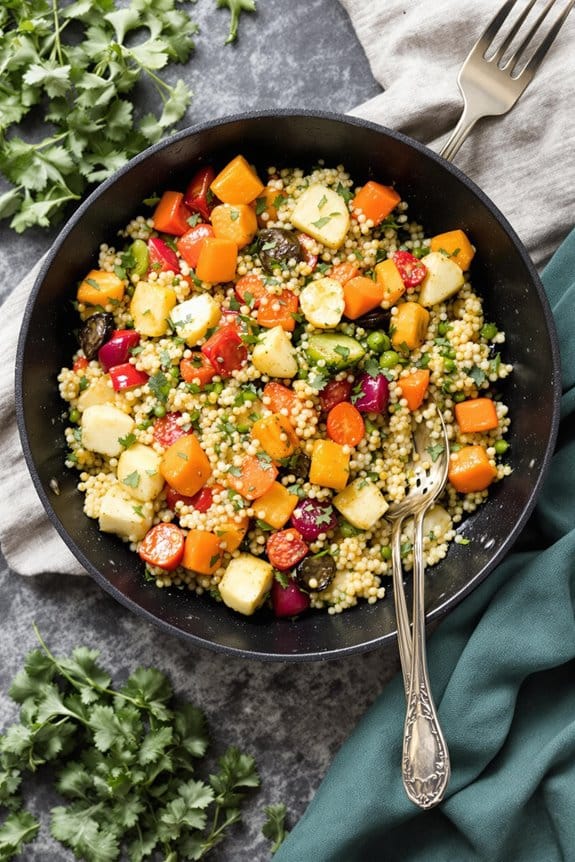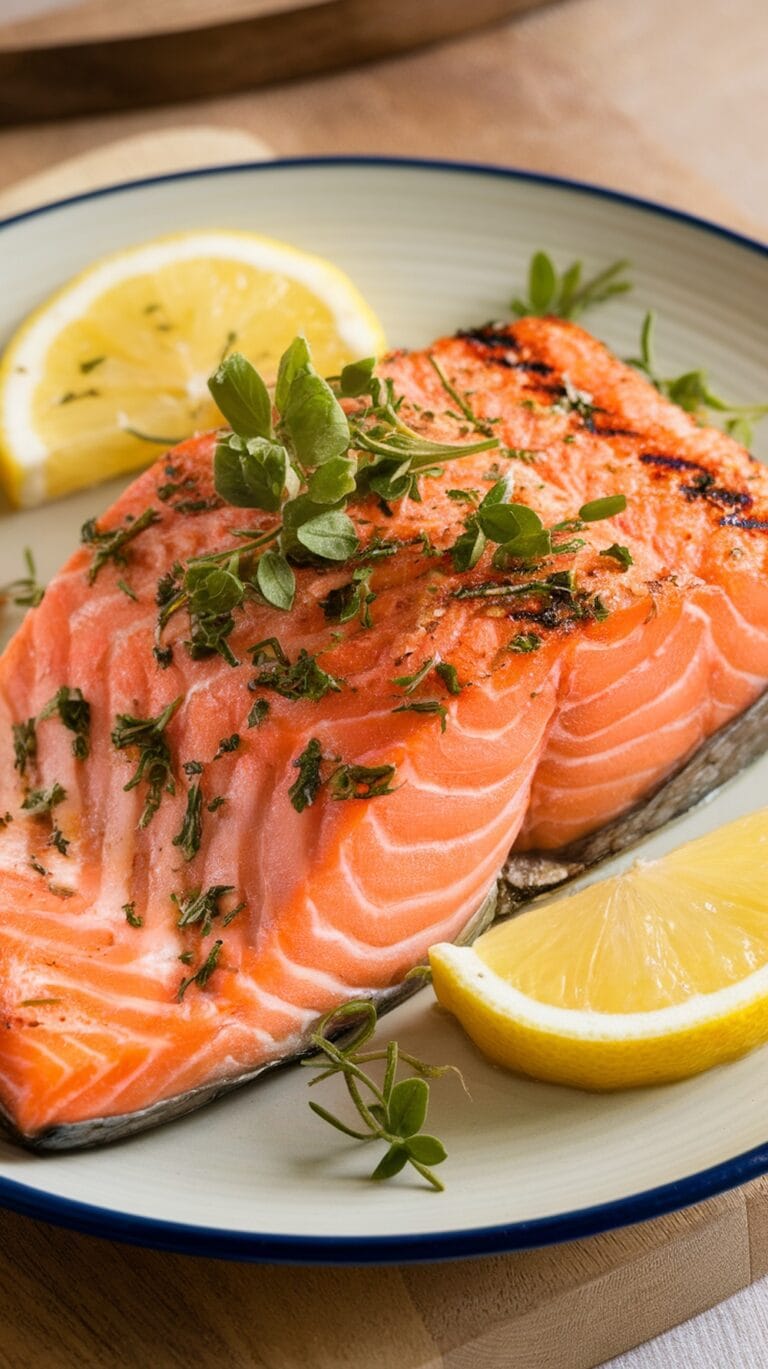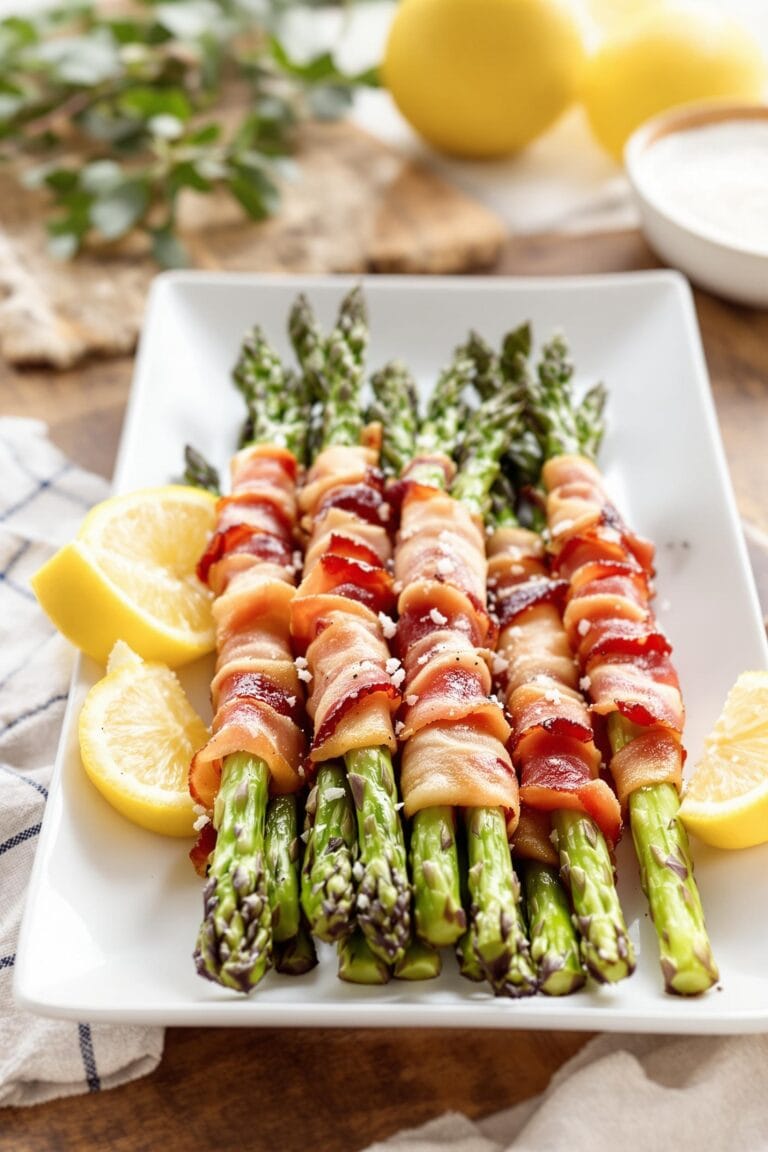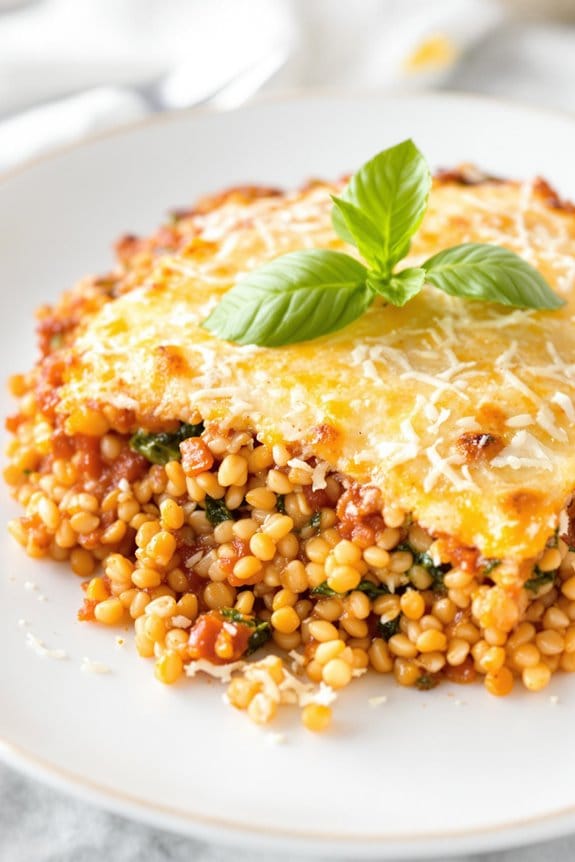You’ve likely experienced the straightforward delight of couscous, but when you mix it with roasted vegetables, garlic butter, and a hint of citrus, it transforms into a culinary treat that stands out on any dining table. Imagine the flavors of roasted peppers, zucchini, and carrots, each bite releasing hints of caramelized goodness, perfectly complementing the fluffy couscous generously tossed in a savory garlic butter sauce. As you prepare this dish, consider how its elements combine to elevate your meal from mundane to remarkable. What makes this combination work so well, and how can enhancing these simple ingredients further change the dynamics of this versatile recipe?
History
Why does garlic butter couscous seem like a modern delight when, in fact, its roots stretch far back into history? You’d be surprised to learn that couscous, a staple in North African cuisine, has been around since the early Middle Ages.
Originating among the Berbers of Algeria and Morocco, couscous was traditionally prepared from millet. Today, it often comprises semolina wheat. The addition of garlic and butter isn’t traditional but is a Western adaptation, marrying the nutty flavors of couscous with rich, aromatic tones.
This delightful combination showcases how traditional dishes evolve with cultural exchanges, reflecting both the preservation of ancient culinary practices and the innovative spirit of modern cuisine. Hence, while it feels contemporary, garlic butter couscous is deeply anchored in rich, historical tapestry.
Recipe
Garlic butter couscous is a quick and flavor-packed side dish that complements a myriad of main courses, from grilled meats and seafood to hearty vegetable stews. Its light, fluffy texture soaked in rich, garlicky butter sauce makes it a delightful alternative to the standard rice or pasta.
This recipe is incredibly straightforward and takes mere minutes to prepare, making it a perfect choice for busy weeknights or impromptu dinner gatherings.
The key to maximizing flavor in this simple dish is using fresh garlic and high-quality butter. As couscous itself is quite neutral in taste, these ingredients will transform it from plain to spectacular with their robust aromas and flavors.
Let’s begin by gathering all the necessary ingredients and then proceed to the cooking instructions to whip up this delicious dish.
Ingredients:
- 1 cup couscous
- 1 1/4 cups chicken or vegetable broth
- 3 tablespoons butter
- 4 cloves garlic, minced
- Salt to taste
- 1 tablespoon chopped parsley (optional for garnish)
- 1 teaspoon lemon zest (optional for enhanced flavor)
In a medium saucepan, bring the chicken or vegetable broth to a boil. Add the couscous, stir briefly, then cover with a lid and remove from heat. Let it sit for 5 minutes.
Meanwhile, melt the butter in a small skillet over medium heat. Add the minced garlic and sauté until it becomes fragrant, about 1-2 minutes; be careful not to burn the garlic.
Fluff the couscous with a fork and then mix in the garlic butter. Season with salt to taste and stir in parsley and lemon zest if using. Serve warm.
When cooking couscous, it’s essential to guarantee that your liquid measurements are precise, as too much liquid can make the couscous mushy, while too little can leave it dry.
Adding lemon zest not only brings a burst of freshness to the dish but also helps cut through the richness of the butter.
If you’re looking to enhance this side dish into a more robust standalone meal, consider folding in some cooked vegetables like peas or diced carrots, or add some grilled chicken strips or sautéed shrimp for a satisfying protein boost.
Step 1. Preheat Oven for Vegetables
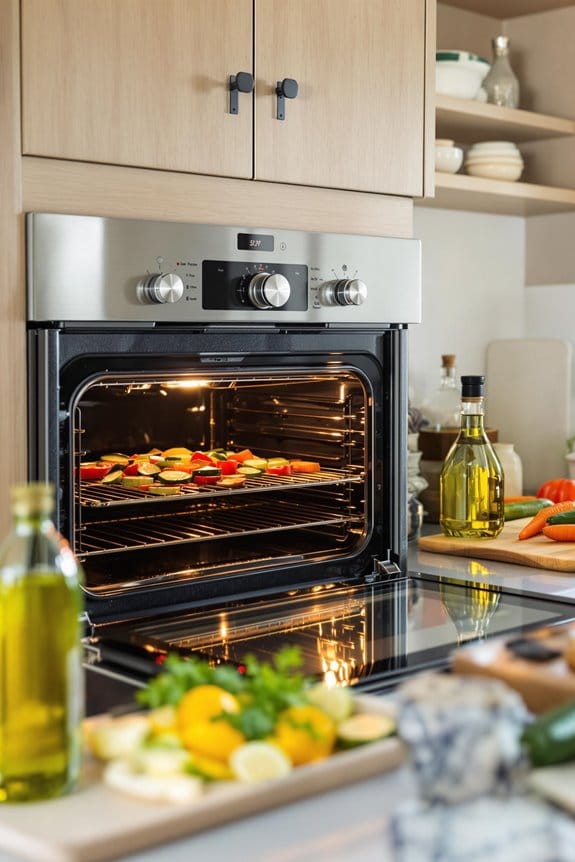
Before roasting your vegetables, you’ll need to preheat the oven to 425 degrees Fahrenheit. This high temperature is key for achieving that perfect char and sweetness which makes roasted veggies irresistible.
It’s essential to allow your oven to reach the full temperature before the vegetables go in. This guarantees they start cooking immediately, avoiding any sogginess that comes from a gradual warm-up.
Also, make certain your oven racks are positioned in the middle, allowing for even heat distribution around your vegetables. Heating your oven fully and correctly is a step you shouldn’t skip; it sets the stage for beautifully roasted vegetables that will enhance your garlic butter couscous with their texture and flavor.
Step 2. Chop and Season Vegetables
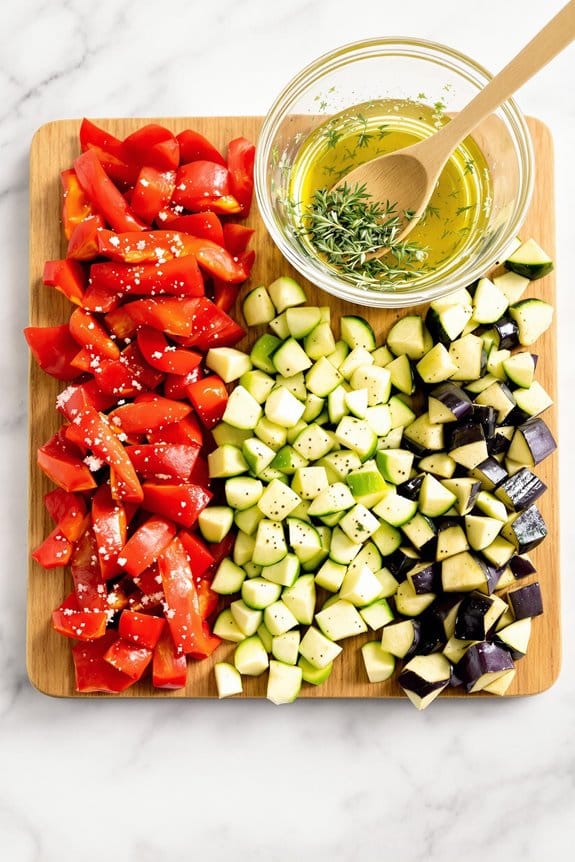
Once your oven is properly heated, it’s time to prepare your vegetables for roasting. Start by washing and drying your chosen veggies—perhaps carrots, bell peppers, and zucchini.
Next, you’ll want to chop them into uniform pieces. This guarantees they cook evenly and integrate beautifully with the couscous later on.
Now, grab a large bowl and toss the chopped vegetables with olive oil—you’ll need just enough to coat them lightly.
Sprinkle with salt, pepper, and any other spices you love; think garlic powder or a dash of paprika for a smoky touch.
Give everything a good mix to guarantee each piece is well-seasoned. This helps bring out the natural flavors and guarantees a delicious, crispy finish.
Step 3. Roast Vegetables in Oven
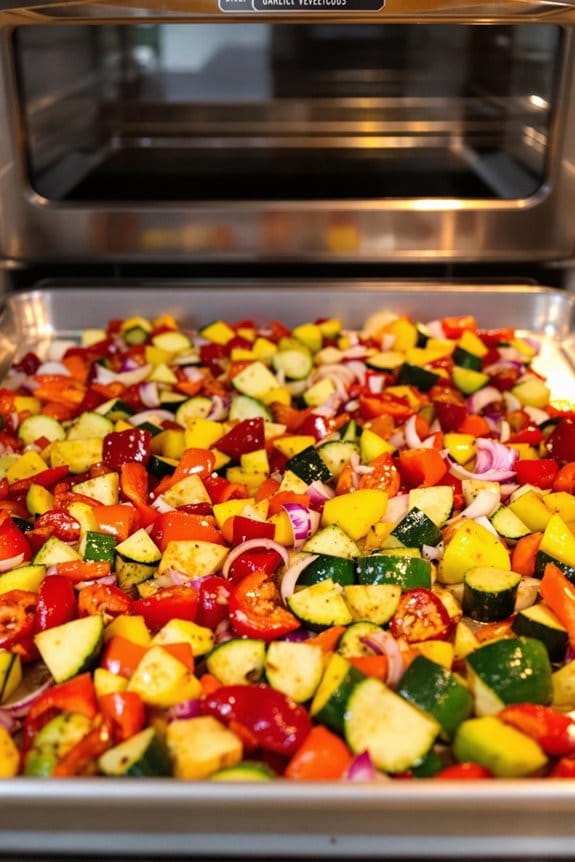
Now that your vegetables are well-seasoned, spread them out on a baking sheet in a single layer to verify they roast evenly.
Make sure there’s space between them; crowding can lead to steaming rather than roasting, which won’t give you that delightful charred edge.
Slide the tray into a preheated oven, typically set around 425°F (220°C). You’ll want to roast them until they’re tender and lightly caramelized, which usually takes about 25 to 30 minutes.
Halfway through, give them a quick stir or a shake. This verifies all sides get a chance to brown nicely, enhancing their flavor.
Once they’re beautifully golden and fragrant, pull them out and set them aside. They’re now ready to complement the couscous perfectly.
Step 4. Prepare Couscous
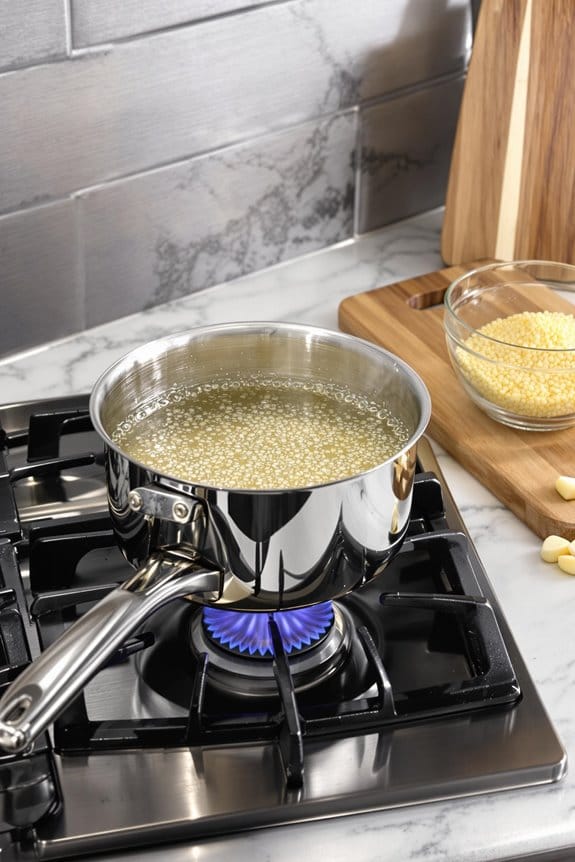
As your vegetables roast, let’s prepare the couscous, a simple process that brings fluffy perfection to your plate.
First, grab a medium saucepan and bring water to a boil. You’ll need about one and a half cups of water for each cup of couscous; this ratio guarantees each grain cooks evenly and fluffs up nicely.
Once your water is boiling, sprinkle in the couscous while stirring gently. Then, cover the saucepan with a tight-fitting lid, and remove it from the heat.
Let it sit undisturbed for about 5 to 10 minutes. The steam trapped inside will cook the couscous.
After the time’s up, fluff it with a fork to break up any clumps, making a perfect bed for your roasted veggies.
Step 5. Mix in Garlic Butter
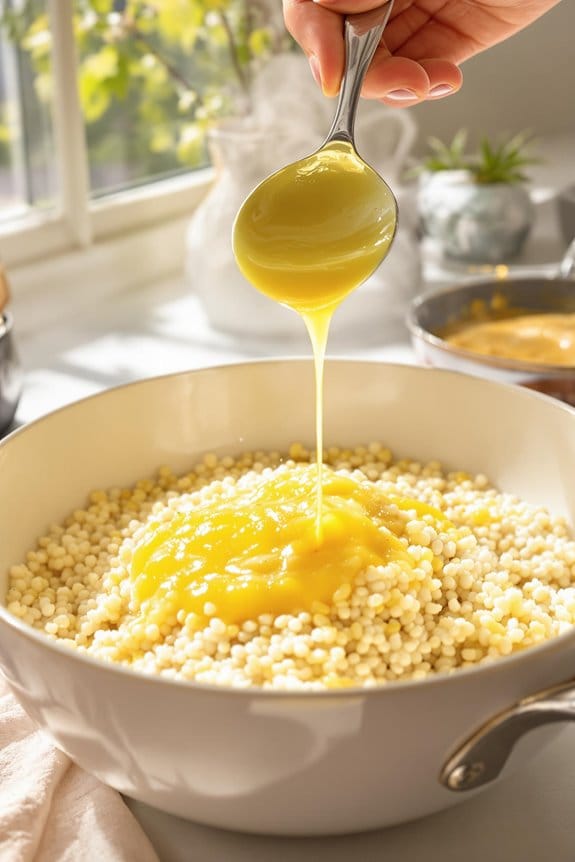
To elevate the fluffy couscous, you’ll need to prepare a rich, aromatic garlic butter.
Start by melting butter in a pan over medium heat. Once it’s melted, add finely minced garlic; let it cook gently—don’t let it brown too much, as that can introduce a bitter flavor. The key here is to infuse the butter with the garlic’s fragrance and essence, transforming it into a savory delight.
Once the garlic emits its characteristic aroma, after about one to two minutes, remove the pan from the heat.
Next, pour this fragrant garlic butter over your warm, cooked couscous.
Stir thoroughly, ensuring each grain is beautifully coated. This simple addition morphs your dish from plain to exceptional, enhancing depths of flavor and creating a mouthwatering experience.
New Recipe
- Pepperoni and Hot Honey PizzaTry the tantalizing twist of pepperoni pizza with hot honey, where sweet meets heat—how will it transform your taste buds?
Cooking Tips
While making garlic butter couscous, keep in mind that toasting the couscous in a bit of butter first not only enhances its nutty flavor but also prevents the grains from clumping together.
Additionally, evenly chop your roasted vegetables to guarantee consistent cooking. Timing is everything; add your vegetables to the couscous at the right moment so they retain their texture and flavors.
Don’t shy away from experimenting with different seasonings like rosemary or thyme, which can subtly enhance the garlic butter’s richness.
Finally, always taste as you go. Adjusting salt and pepper as you cook rather than waiting until the end will help you perfect the dish’s flavor balance before serving.
These tips will elevate your couscous from good to great.
Final Thoughts
Crafting the perfect garlic butter couscous may seem challenging, but with these techniques, you’ll find it’s quite manageable and deeply rewarding.
The combination of buttery richness and the aromatic punch of garlic transforms the humble couscous into a comforting meal that not just satisfies hunger but also delights the senses.
To further enhance your cooking experience:
- Experiment with different roasted vegetables like carrots, zucchini, or bell peppers for added texture and flavor.
- Consider incorporating fresh herbs such as parsley or cilantro right before serving, boosting the freshness.
- A squeeze of lemon juice can brighten the entire dish, giving it a subtle tang and vibrant appeal.

